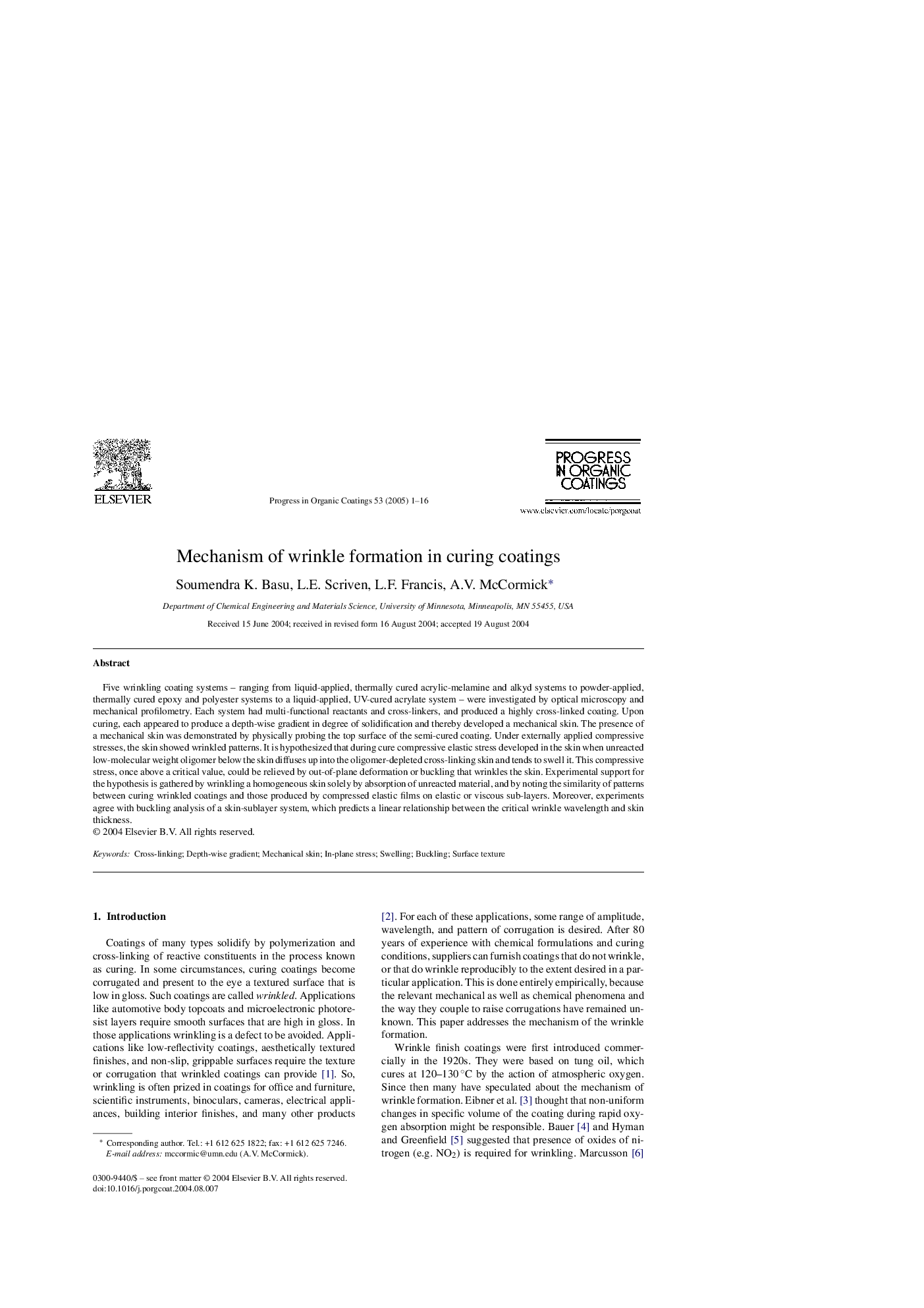| کد مقاله | کد نشریه | سال انتشار | مقاله انگلیسی | نسخه تمام متن |
|---|---|---|---|---|
| 10398214 | 889947 | 2005 | 16 صفحه PDF | دانلود رایگان |
عنوان انگلیسی مقاله ISI
Mechanism of wrinkle formation in curing coatings
دانلود مقاله + سفارش ترجمه
دانلود مقاله ISI انگلیسی
رایگان برای ایرانیان
موضوعات مرتبط
مهندسی و علوم پایه
مهندسی شیمی
تکنولوژی و شیمی فرآیندی
پیش نمایش صفحه اول مقاله

چکیده انگلیسی
Five wrinkling coating systems - ranging from liquid-applied, thermally cured acrylic-melamine and alkyd systems to powder-applied, thermally cured epoxy and polyester systems to a liquid-applied, UV-cured acrylate system - were investigated by optical microscopy and mechanical profilometry. Each system had multi-functional reactants and cross-linkers, and produced a highly cross-linked coating. Upon curing, each appeared to produce a depth-wise gradient in degree of solidification and thereby developed a mechanical skin. The presence of a mechanical skin was demonstrated by physically probing the top surface of the semi-cured coating. Under externally applied compressive stresses, the skin showed wrinkled patterns. It is hypothesized that during cure compressive elastic stress developed in the skin when unreacted low-molecular weight oligomer below the skin diffuses up into the oligomer-depleted cross-linking skin and tends to swell it. This compressive stress, once above a critical value, could be relieved by out-of-plane deformation or buckling that wrinkles the skin. Experimental support for the hypothesis is gathered by wrinkling a homogeneous skin solely by absorption of unreacted material, and by noting the similarity of patterns between curing wrinkled coatings and those produced by compressed elastic films on elastic or viscous sub-layers. Moreover, experiments agree with buckling analysis of a skin-sublayer system, which predicts a linear relationship between the critical wrinkle wavelength and skin thickness.
ناشر
Database: Elsevier - ScienceDirect (ساینس دایرکت)
Journal: Progress in Organic Coatings - Volume 53, Issue 1, 1 May 2005, Pages 1-16
Journal: Progress in Organic Coatings - Volume 53, Issue 1, 1 May 2005, Pages 1-16
نویسندگان
Soumendra K. Basu, L.E. Scriven, L.F. Francis, A.V. McCormick,